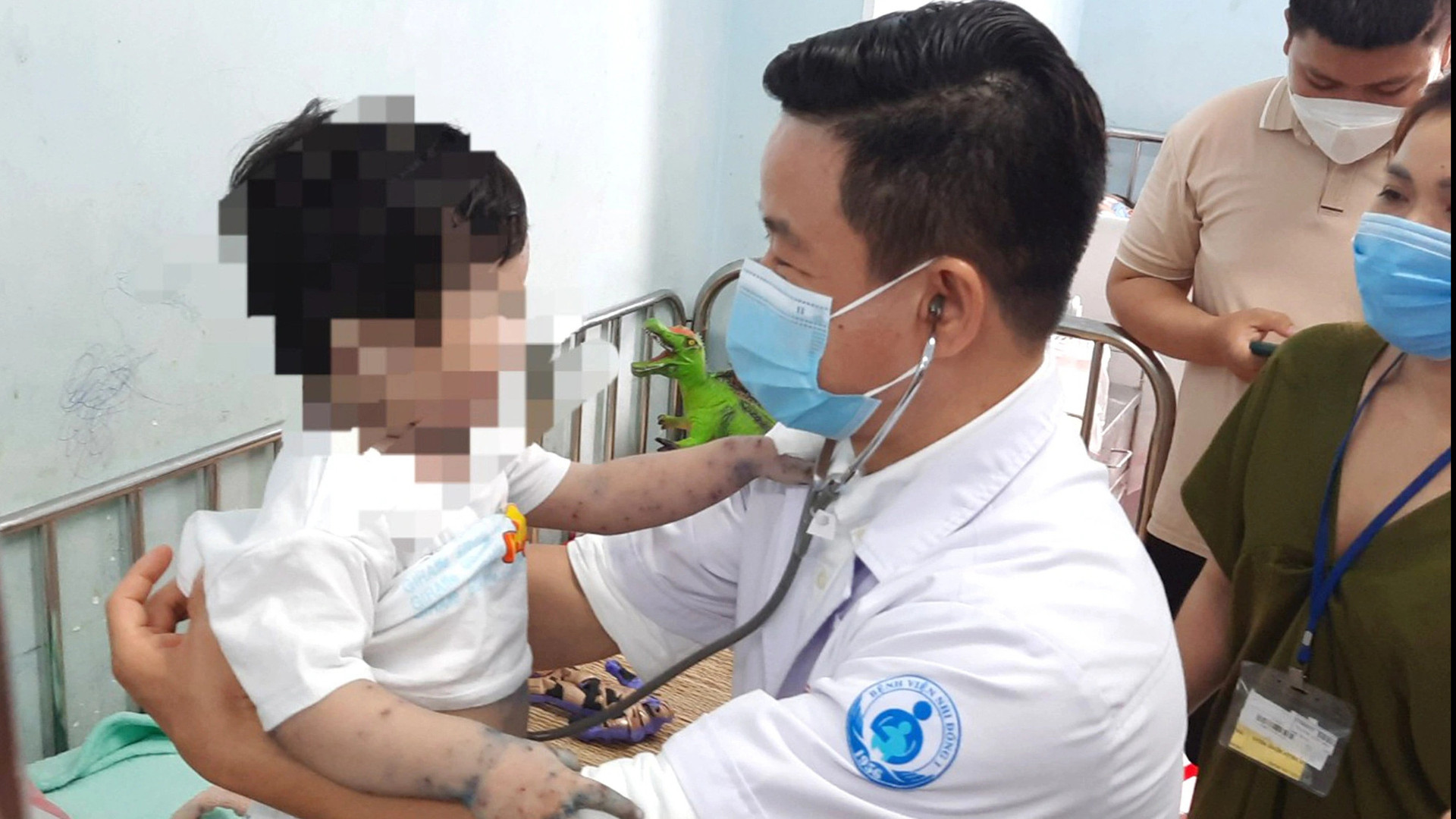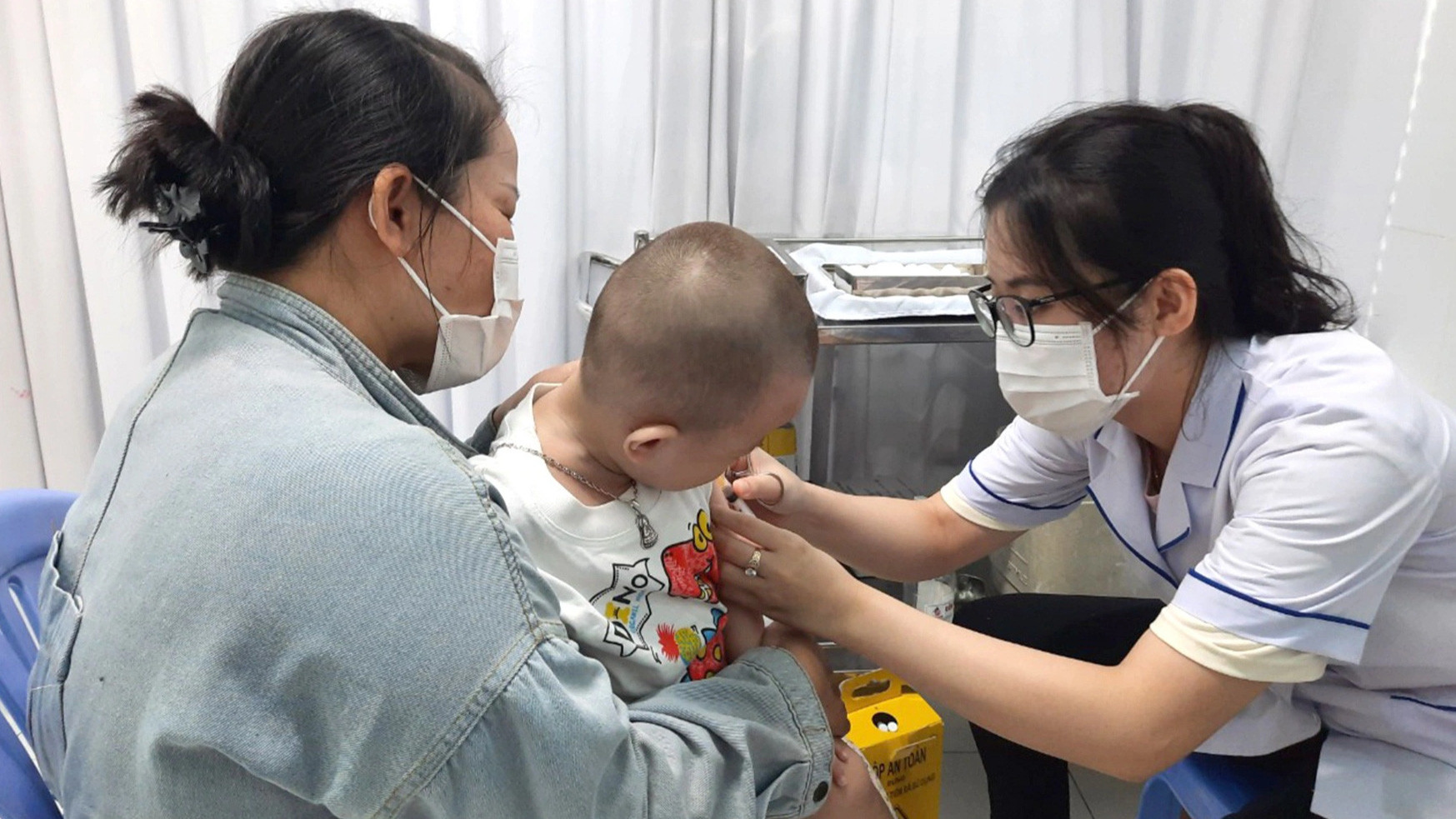Since the beginning of April, a number of infectious diseases in children have appeared and increased compared to the same period last year such as measles, hand, foot and mouth disease, dengue fever, whooping cough, chickenpox, etc.

Doctors warn that this is the peak of some epidemics, parents need to pay attention to prevention and ensure safety for children. The Ministry of Health also continuously issues warnings and recommends strengthening epidemic prevention.
According to statistics from the Ministry of Health, in the first 3 months of 2024, the number of cases of infectious diseases such as hand, foot and mouth disease, measles, and whooping cough increased compared to the same period last year.
Of which, the number of hand, foot and mouth disease cases exceeded 10,000, an increase of 2.1 times compared to the same period in 2023. The Department of Preventive Medicine (Ministry of Health) warned that the number of cases will increase from July to November. Measles has recorded more than 130 cases, an increase of 1.4 times compared to the same period last year.
The Hanoi Department of Health has warned that the number of hand, foot and mouth disease cases has entered its first peak, with nearly 200 cases recorded in the week, and is expected to increase in the coming time. Hanoi also recorded its first measles case of the year.
In Ho Chi Minh City, according to a report from the Center for Disease Control, from April 8 to 14, there were 287 cases of hand, foot and mouth disease, an increase of 87% compared to the average of the previous month; dengue fever increased by 7% compared to the average of the previous 4 weeks; 9 cases of whooping cough in March 2024.
Seeing her child had a fever and small rashes on her legs and elbows, Ms. Trang (25 years old, Hanoi) initially thought her child had a fever and rash, so she gave her child fever-reducing medicine and monitored her at home. When her child's fever did not go down, she took her to the hospital. Clinical results showed that the doctor had red spots on the child's palate and gums, and tests diagnosed the child with grade 2 hand, foot and mouth disease.
The National Children's Hospital has also recently received many cases of hand, foot and mouth disease. Ms. Do Thi Thuy Hau - Head Nurse of the Tropical Disease Center, National Children's Hospital - recommends that to prevent the spread, when a child is found to be sick, the family should isolate the child at home for the first 10-14 days of the illness.
Patient NH (5 years old, Long An) was admitted to the Children's Hospital (Ho Chi Minh City) with a high fever, blisters on the face and itching. The family took the child to the hospital for examination and was diagnosed with chickenpox. The child was treated by doctors with antibiotics to prevent secondary infection, kept clean, wore cool clothes, and was placed in an isolation room to prevent the spread of infection...
Dr. Nguyen Minh Tien - Deputy Director of the City Children's Hospital - said that in the first 3 months of 2024, the hospital examined and treated 112 cases of chickenpox, of which 9 were severe and required inpatient treatment. The number of chickenpox cases started to increase from March, with the hospital receiving an average of 5-6 cases per day, most of which were mild due to vaccination.
Ms. Hau warned that hand, foot and mouth disease has many dangerous complications and especially develops very quickly within a few hours. Therefore, when children are treated at home, in addition to taking care of them and giving them medicine according to the doctor's instructions, parents need to closely monitor the progress of the child's illness to promptly take them to a medical facility to avoid unfortunate consequences that may occur.

According to Ms. Duong Thi Hong - Deputy Director of the Central Institute of Hygiene and Epidemiology, in 2023, due to the impact of vaccine supply disruptions, the vaccination rate will be low. Children are susceptible to dangerous infectious diseases such as measles, diphtheria, Japanese encephalitis, etc. and need to be vaccinated to prevent disease.
Since the beginning of 2024, the National Institute of Hygiene and Epidemiology has provided 9 types of vaccines (except IPV vaccine) to meet the minimum demand until April 2023. The Institute has also found a source of vaccine supply to ensure the vaccination needs of children, timely allocation, increased catch-up vaccination, and additional vaccination for children of the right age.
In Ho Chi Minh City, on the morning of April 22, the City Center for Disease Control said it had received 13,000 doses of the 5-in-1 vaccine from the Expanded Immunization Program and was ready to start vaccinating children this week. Parents need to follow the vaccination schedule and take their children to get vaccinated on schedule and with all the doses.
In the first three months of the year, the country recorded more than 14,500 cases of dengue fever, down 41.9% compared to the same period in 2023. The disease was mainly recorded in the Central and Southern regions (accounting for 89%). The Department of Preventive Medicine also warned that the disease is distributed over time, increasing from July to November.
When is hand, foot and mouth disease likely to break out?
Hand, foot and mouth disease is common in children under 5 years old, spreads quickly and can easily become an epidemic year-round, but often increases from April to June and October to December. The disease is transmitted through the digestive tract, direct contact with sick people, contact with toys, clothes... especially in collective environments such as kindergartens and schools.
Signs of hand, foot and mouth disease in children: mild fever, fatigue, mouth ulcers, sore throat, loss of appetite, drooling, blister-like rash (on the palms of the hands, soles of the feet, buttocks, etc.). Parents should take their children to the doctor immediately if they have the following signs: startled, fever for more than two days, purple skin, rapid pulse, etc.